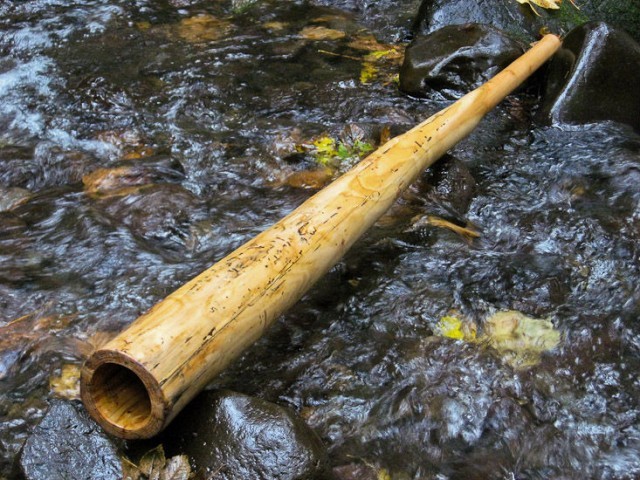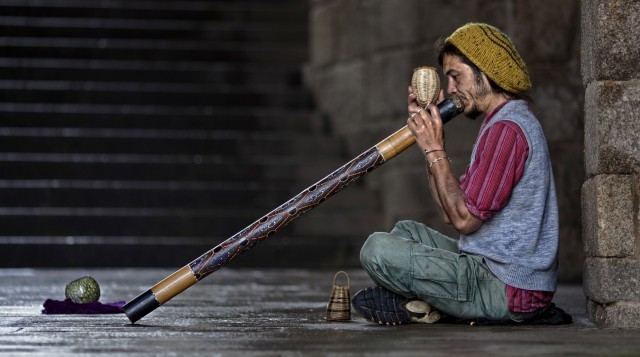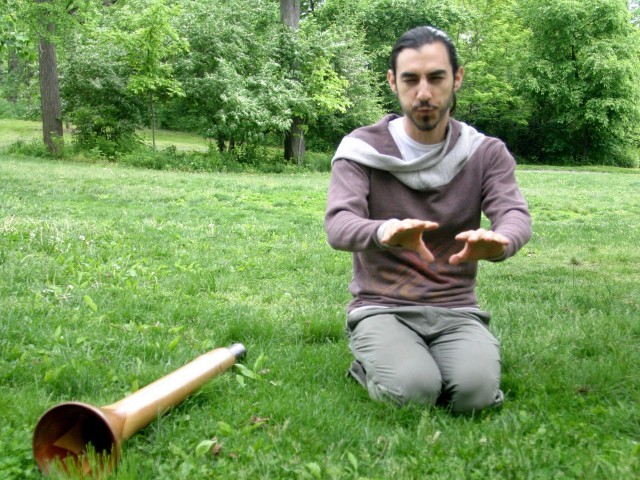It can be frustrating to listen to your favorite didgeridoo artist and hear the amazing sounds he or she makes yet when you pick up your own instrument you find you have no idea what it is they are doing. Here are a few tips to help you get a better sound on didgeridoo.
1Find The Right Instrument

Didgeridoo players are always excited when they come across the opportunity to try out a new didge. This is because every didge you encounter sounds, feels, and plays differently from every other didgeridoo. Each instrument has its own unique musical fingerprint through which it shapes the sound. Some didges are amazing for getting really heavy bass sounds that feel as if they can warp the whole room, while other didges hit such high notes that they could be mistaken for another instrument entirely. Size, shape, and material all play an enormous role in what your didge is going to sound like. It is not always obvious what materials are going to make a good sound either. I have played some beautiful handcrafted eucalyptus didgeridoos that I would never even consider buying and I have also played a didgeridoo that was crafted using nothing but a pair of blue jeans and epoxy that sounded amazing (seriously). Remember to be open-minded. You need to find the right didge for the sound you want. I love to sing through the didge and create rich bass heavy sounds so I play with a seven foot yucca didge with a wide mouth piece; if I was to play the same way with a higher pitched didge it would sound horrible. The key here is to know what sound you are looking for. Experiment and find the right instrument for you.
2Find The Right Space To Play In

The didgeridoo is from the Australian outback and is typically associated with the desert and wide open spaces but it actually can sound kind of flat and dull in such an environment. You are going to get the best acoustics in either a small enclosed room or a very resonant (cement) tunnel or enclosed area. Does it change the quality of the sound like wow! Playing outside is an amazing experience because the didge has the spirit of the Earth embedded in it but if you really want to explore the range of what your instrument is capable of find the location with the best acoustics possible. I find that playing in a room with good acoustics feels like it adds a second layer to the instrument and the power of the drone is amplified drastically. Go out there and search around. Find the space that best supports your playing.
3Learn to Adjust Your Speed, Volume, and Air Pressure For A Better Sound On Didgeridoo

This is essential for players of all levels but I especially see this with those just starting out with the didge. The tendency people have when they are looking to create a new sound is to blow as hard as they can, play as fast as possible, and as loud as possible. The first problem is that it disrupts your entire physical system. Your mouth and throat become clogged from the physical strain required to make a rich sound and the music turns into a jarring noise. What is supposed to be creative flow has turned into a disruptive force. Too much speed and physical strain also throws the mind and breath off center and having a meditative head space is one of the pillars to creating a solid, rhythmic, flowing sound. I started off playing as fast of rhythms as I could when I began playing the didge and it resulted in my breathing getting totally out of sync. I would find myself tired, stressed out, and unable to sustain circular breath. I discovered that I could really explore the sounds of the instrument and enjoy them once I learned to slow down. The best way to learn a fast rhythm is to practice it slowly and build up to the ideal speed. Even animal cries, which are produced by making jarring sounds into the didge, can be created in low volume at a slow speed and sound amazing. Air pressure is one of the biggest obstacles I see new didge players come up against. People will start blowing as hard as they can into the didge when they are having a hard time getting the drone or another sound. The truth is a good drone can be made with hardly any air pressure or flow. A solid drone comes more from having the lips adjusted at a certain degree of tightness in the middle between maximum loose and maximum tight. Work on adjusting the lips and mouth if you are getting stuck with the basic sounds and experiment with varying degrees of air pressure. I also recommend meditating before and even between practice sessions. You will be amazed at how much your playing ability is dependent on your state of mind. The more open and relaxed you are the more the music is going to flow and play itself.
4Try Playing Through A Microphone

Playing didgeridoo through a microphone is an entirely different experience from playing acoustically. Sounds that are essentially inaudible during acoustic playing take on a life of their own when sent through an audio system. This is worth taking note of when you hear sounds on a recorded track that seem impossible to duplicate.













Agree with all of this, thanks! re 2) my favorite easy-to-find practice spaces are stairwells – the more concrete the better.
I’ve also had good results experimenting with different setups to improve my posture. Getting my neck and torso relaxed and at the right angle improves the sound and also lets me play much longer without getting tired or tense.
Thanks so much Tom. Great having your contribution here. Bathtubs are also fantastic! -AJ
I live in Kathmandu and study tabla , I also play didge , There are surprisingly MANY didge players in Nepal. But Nepal is hardly a didge players destination or place to learn didge. It becoming increasingly popular and trendy to travel to nepal and then pretentiously write blogs.. hahah . Point is travelling to Nepal is hardly novel as many many people do already.